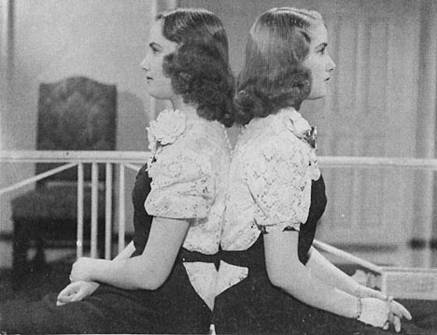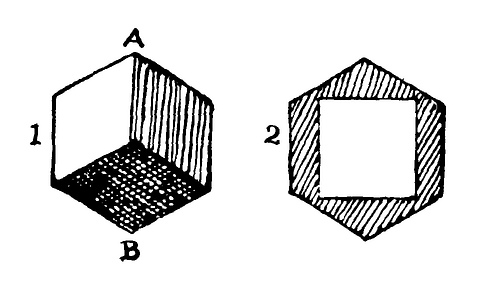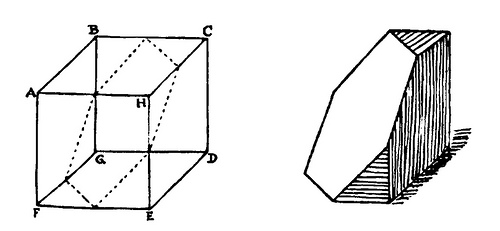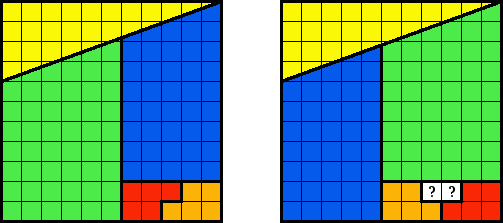
Puzzles
Two Many
The English Officer
Here’s a poser adapted from a 1923 intelligence test:
“I was so sorry to hear of Harold’s death, Mary.”
“Thank you, Mildred.”
“May I ask the circumstances?”
“Of course. He had fallen asleep in church during the sermon and was dreaming that an executioner was approaching to cut off his head. He had witnessed some rather gruesome things during the Boxer Rebellion in China some years ago, you know. Just as the sword was falling, I happened to touch him on the back of his neck with my fan, to awaken him. The shock was too great, and he fell forward dead.”
What’s wrong with this story?
King Walk
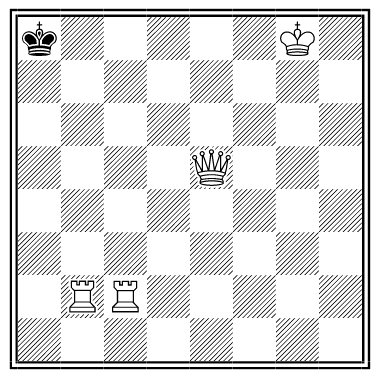
By J. Kling. White to mate in 64 moves, forcing the black king to occupy every square on the board:
1. Rb8+ Ka7 2. Qc7+ Ka6 3. Qb7+ Ka5 4. Qb6+ Ka4 5. Rc4+ Ka3 6. Qe3+ Ka2 7. Rc2+ Ka1 8. Ra8+ Kb1 9. Rcc8 Kb2 10. Qc1+ Kb3 11. Ra3+ Kb4 12. Qc3+ Kb5 13. Rc5+ Kb6 14. Qa5+ Kb7 15. Rd3 Kb8 16. Rb5+ Kc8 17. Qa8+ Kc7 18. Qb8+ Kc6 19. Rb6+ Kc5 20. Qd6+ Kc4 21. Rd4+ Kc3 22. Qb4+ Kc2 23. Re6 Kc1 24. Rc4+ Kd1 25. Qb1+ Kd2 26. Qc1+ Kd3 27. Rc3+ Kd4 28. Qe3+ Kd5 29. Re5+ Kd6 30. Qc5+ Kd7 31. Rf3 Kd8 32. Rd5+ Ke8 33. Qc8+ Ke7 34. Qd8+ Ke6 35. Rd6+ Ke5 36. Rf7 Ke4 37. Qf6 Ke3 38. Qd4+ Ke2 39. Rh6 Ke1 40. Re7+ Kf1 41. Qg7 Kf2 42. Rh1 Kf3 43. Qg1 Kf4 44. Qg2 Kf5 45. Qg3 Kf6 46. Qe5+ Kg6 47. Qe6+ Kg5 48. Qf7 Kg4 49. Rh5 Kg3 50. Qf5 Kg2 51. Qf4 Kg1 52. Rg5+ Kh1 53. Qe4+ Kh2 54. Kf7 Kh3 55. Qg2+ Kh4 56. Rg4+ Kh5 57. Re5+ Kh6 58. Qc6+ Kh7 59. Ke8 Kh8 60. Rh4+ Kg7 61. Kd8 Kg8 62. Rg5+ Kf7 63. Rh7+ Kf8 64. Qf6#
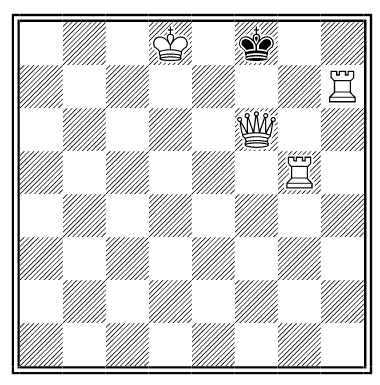
“A Cube Paradox”
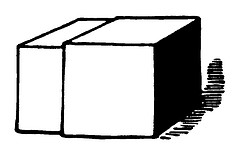
A puzzle from Henry Dudeney:
I had two solid cubes of lead, one very slightly larger than the other, just as shown in the illustration. Through one of them I cut a hole (without destroying the continuity of its four sides) so that the other cube could be passed right through it. On weighing them afterwards it was found that the larger cube was still the heavier of the two! How was this possible?
“Cutting the Cheese”
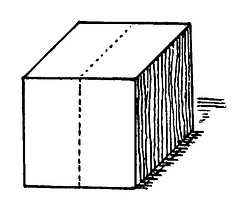
A puzzle from Henry Ernest Dudeney:
Here is a simple question that will require just a few moments’ thought to get an exact answer. I have a piece of cheese in the shape of a cube. How am I to cut it in two pieces with one straight cut of the knife so that the two new surfaces produced by the cut shall each be a perfect hexagon? Of course, if cut in the direction of the dotted line the surfaces would be squares. Now produce hexagons.
Card Trick
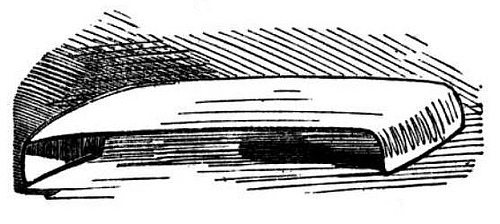
Take … a common visiting-card, and bend down the two ends, and place it on a smooth table, as represented in the annexed diagram, and then ask any one to blow it over.
This seems easy enough; yet it is next door to an impossibility. Still, it is to be done by blowing sharply and not too hard on the table, about an inch from the card.
— Frank Bellew, The Art of Amusing, 1866
“To Take a Man’s Waistcoat Off Without Removing His Coat”
The waistcoat should first be unbuttoned in the front, and then the buckle at the back must be unloosed. The operator, standing in front of the person operated upon, should then place his hands underneath the coat at the back, taking hold of the bottom of the waistcoat, at the same time requesting the wearer to extend his arms at full length over his head. Now raise the bottom part of the waistcoat over the head of the wearer (if the waistcoat be tight it will be necessary to force it a little, but this must not be minded so long as the waistcoat is not torn); the waistcoat then will have been brought to the front of the wearer, across his chest. Take the right side bottom-end of the waistcoat, and put it into the arm-hole of the coat at the shoulder, at the same time putting the hand up the sleeve, seizing the end, and drawing it down the sleeve; this action will release one arm-hole of the garment to be removed. The next thing to be done is to pull the waistcoat back again out of the sleeve of the coat, and put the same end of the waistcoat into the left arm-hole of the coat, again putting the hand up the sleeve of the coat as before, and seizing the end of the garment. It may then be drawn quite through the sleeve, and the puzzle is accomplished.
— Cassell’s Complete Book of Sports and Pastimes, 1896
The Locked Gift
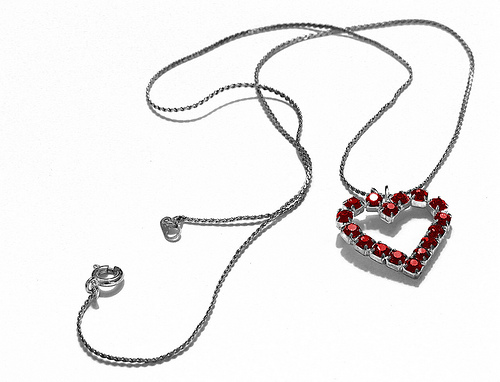
I want to mail a necklace to my wife, but anything sent through the mail will be stolen unless it’s sent in a padlocked box. A box can bear any number of padlocks, but neither of us has the key to a lock owned by the other. How can I mail the necklace safely to my wife?
“Monkey and Pulley”
A rope is passed over a pulley. It has a weight at one end and a monkey at the other. There is the same length of rope on either side and equilibrium is maintained. The rope weighs four ounces per foot. The age of the monkey and the age of the monkey’s mother together total four years. The weight of the monkey is as many pounds as the monkey’s mother is years old. The monkey’s mother is twice as old as the monkey was when the monkey’s mother was half as old as the monkey will be when the monkey is three times as old as the monkey’s mother was when the monkey’s mother was three times as old as the monkey. The weight of the rope and the weight at the end is half as much again as the difference in weight between the weight of the weight and the weight and the weight of the monkey. Now, what is the length of the rope?

